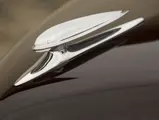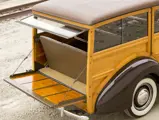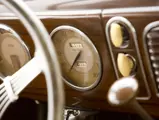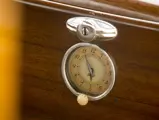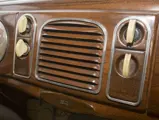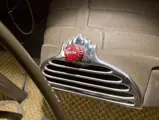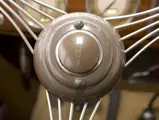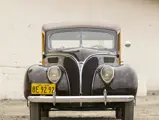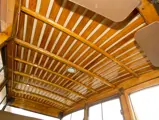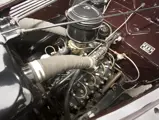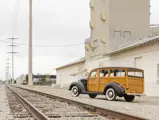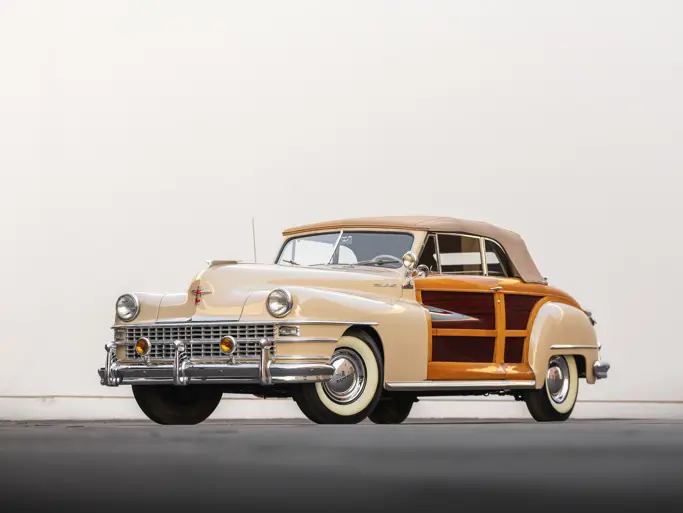Model 81A. 85 bhp, 221 cu. in. L-head V-8 engine, three-speed manual, solid front axle and live rear axle with transverse semi-elliptic leaf springs, and four-wheel mechanical drum brakes. Wheelbase: 112 in.
The 1938 model year was doubly significant for Ford station wagons. It was the first year that Ford’s Standard and DeLuxe series were differentiated by their front-end sheet metal. Through 1940, each year’s Standard cars had hoods and grilles similar to the previous year’s DeLuxe, with slight differences, while DeLuxe cars had a completely different look. For wagons in particular, 1938 marked a milestone: they were finally recognized as passenger cars, elevated from the commercial catalogue.
Standard model cars had a modified 1937-style grille and hood, while the DeLuxe models, the first to be styled by E.T. Gregorie’s new design section, adopted a heart-shaped motif. Sedans also got new bodies that had a curved fastback contour. All cars were available with the 85-brake horsepower V-8, while Standard models could be ordered with the economy 136-cubic inch, 60-brake horsepower unit, which had become available in 1937. In mid-year, Ford upgraded the 85-brake horsepower engine by adding three head bolts per side; these became known as “24-stud” engines.
On station wagons, the spare tire was moved inside, attached to the bulkhead behind the driver’s seat, and furnished with a canvas or artificial leather slip-over cover. The body was newly revised, with the five horizontal panels from 1935–1937 giving way to a two-panel configuration. For 1938, it also seems that the station wagon was built only as a DeLuxe model, with 6,944 built.
The term “restored original,” heard all too often, sounds like an oxymoron, but in this case, it is not. It was done with a process known as “cataloguing,” where the car is disassembled, the parts are refinished or replaced as necessary (and only where necessary), and then every piece is returned to its original location. This process preserves the character and patina wherever possible, while producing a clean, tidy, and well-performing car.
This car spent most of its life in Ridgefield, Connecticut, where it served as a utility vehicle at Locust Shade Farm, whose name is still on the doors. When found, it was laboring under decades of grime and dirt, the removal of which revealed much desirable originality worth saving. The interior is largely original, with only the seats having been reupholstered and new floor mats fitted. The steering wheel and dashboard show much patina, with some thin paint and a few scratches. The glass is all original Ford-script type, showing a bit of delamination. The wiring is original, as is much of the rubber weather stripping, which is sound but showing the discoloration and checks of age.
The Coach Maroon paint is new, and the brightwork has been replated or, in the case of stainless steel, polished. All is very nice, with no pits or scratches. The top fabric is believed original, and the original wood has been superbly varnished. The 24-stud V-8 starts on the button, and when driven by an RM specialist, the shifting was smooth and the mechanical brakes were sturdy. The 53,000 miles shown are believed correct.
Because of their popularity (more than 120,000 were built between 1932 and 1948), Ford woodies are comparatively plentiful today. Examples with the originality of this car, however, are not. Therefore, it represents an uncommon opportunity.






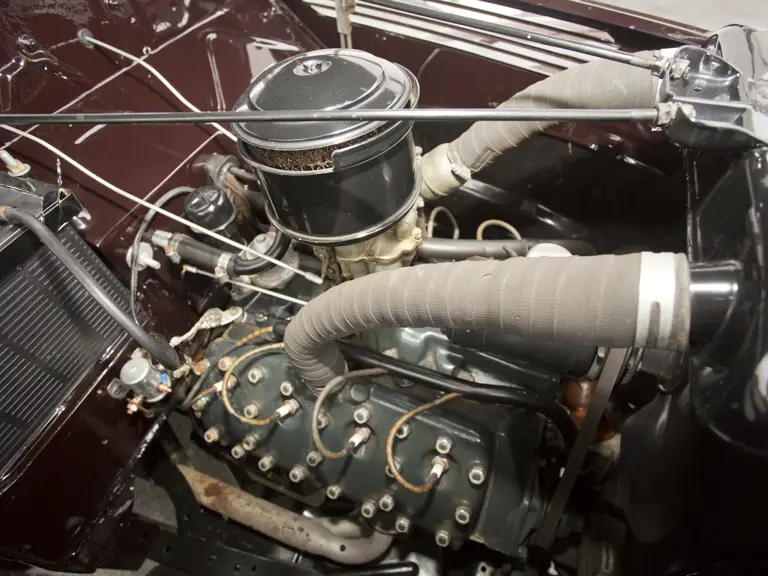

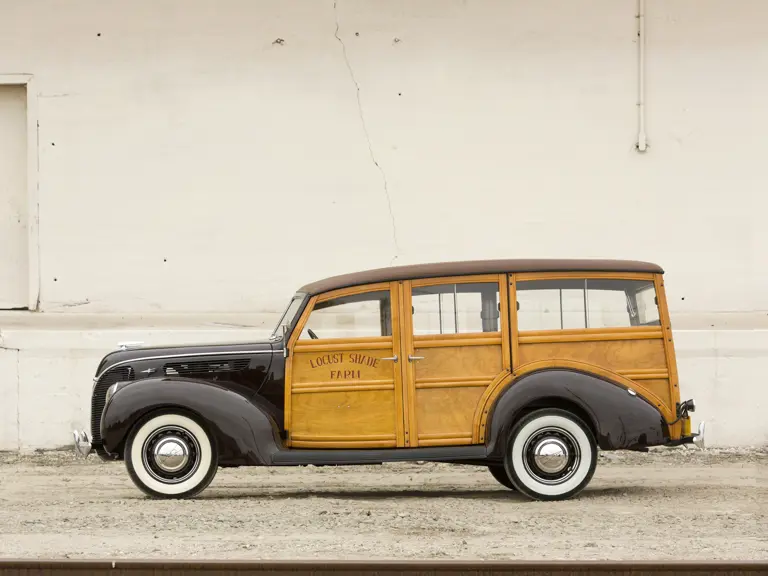

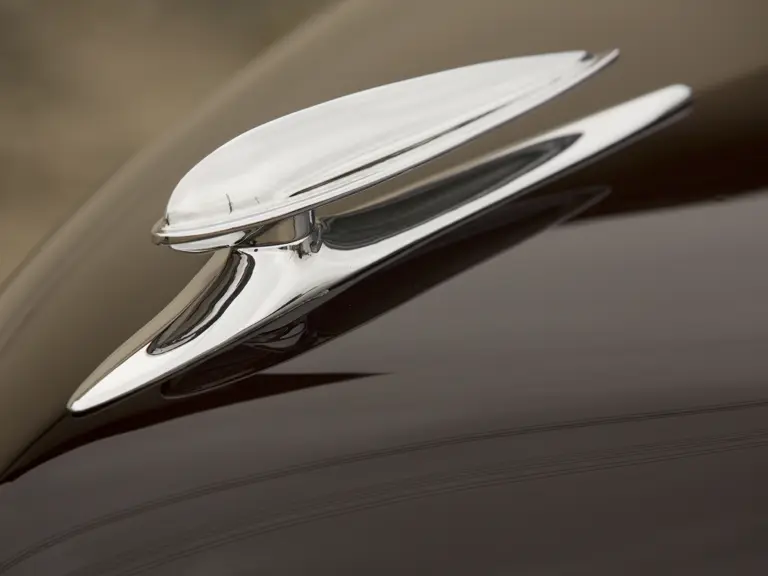
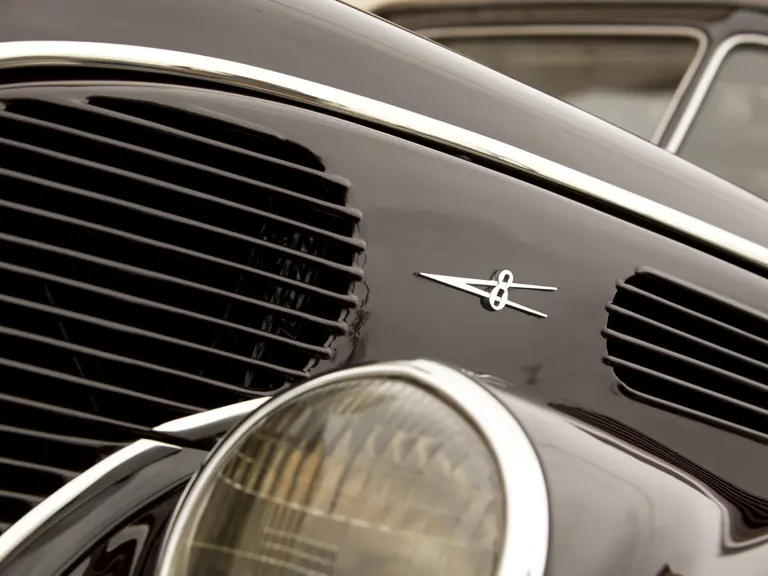

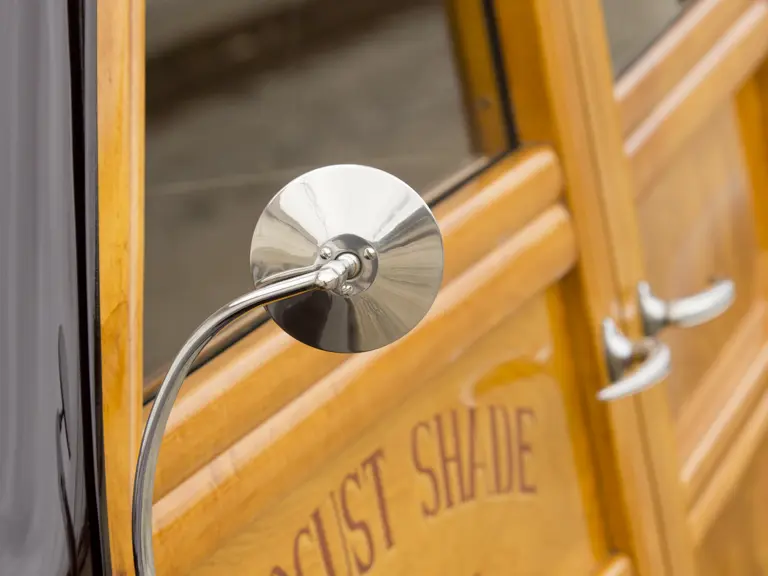
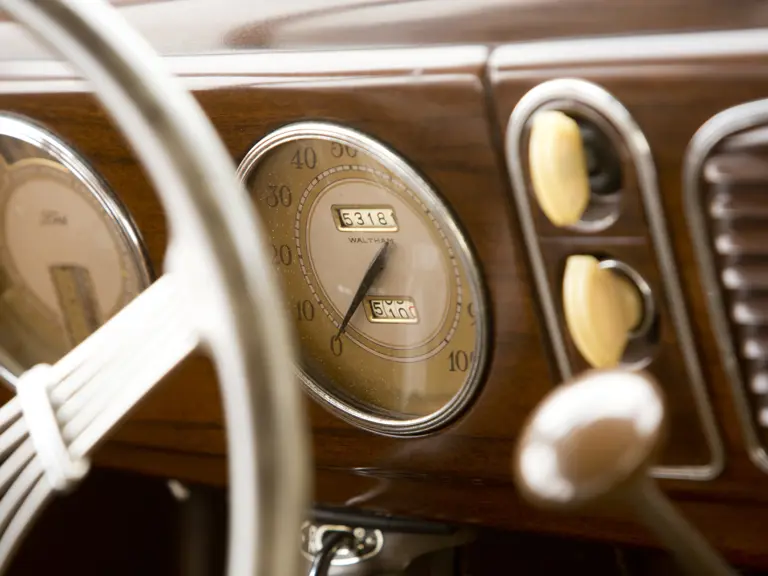
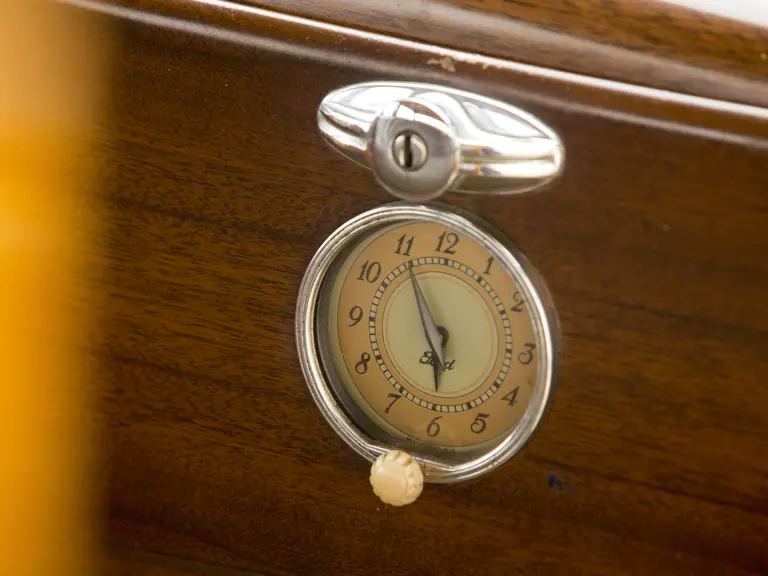
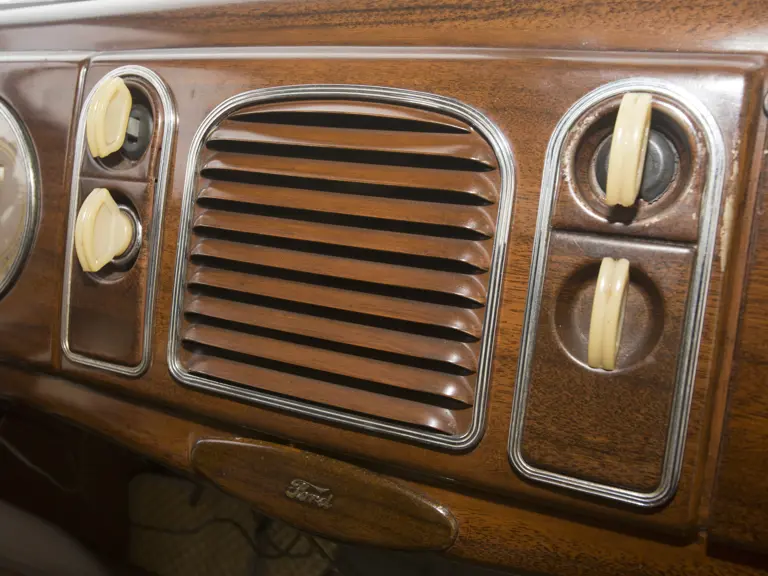
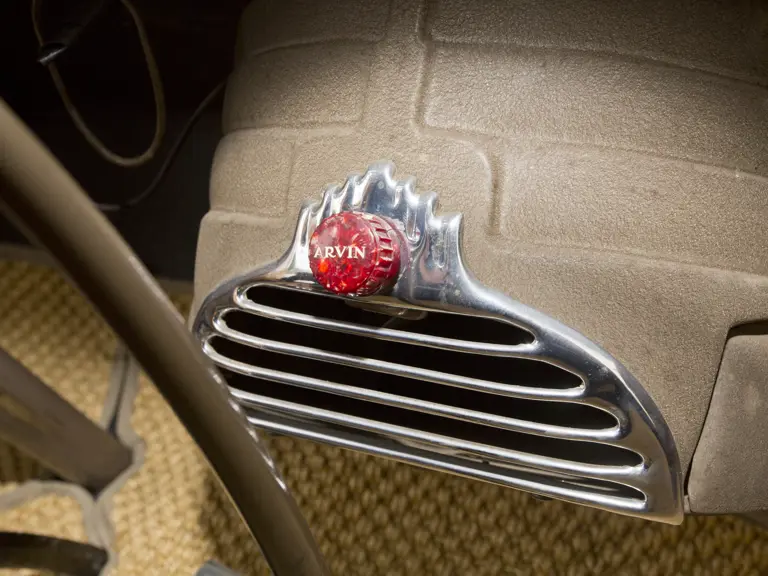
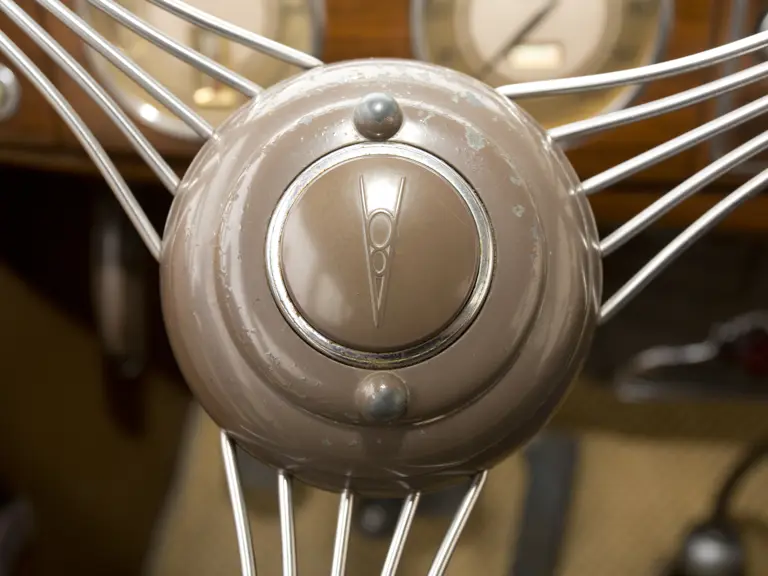
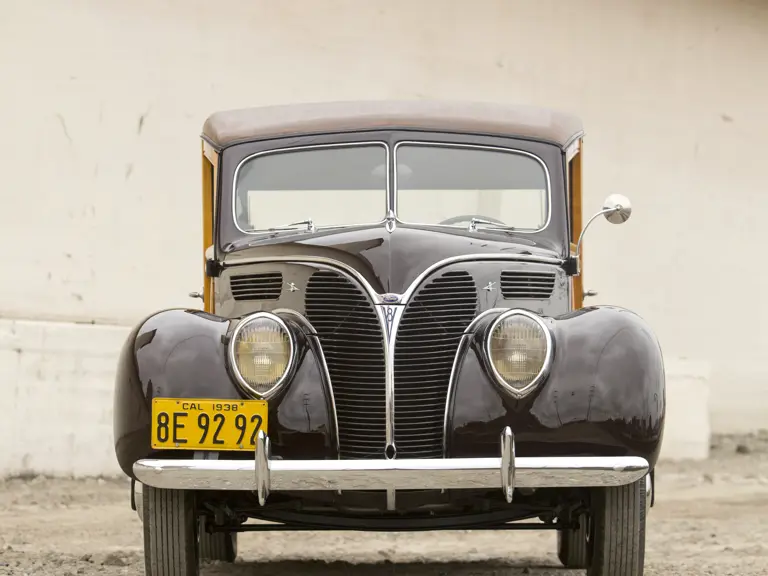
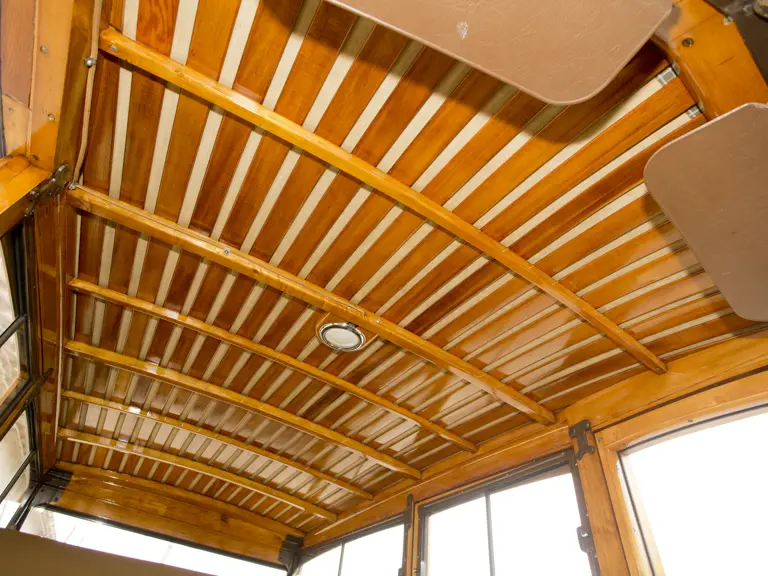
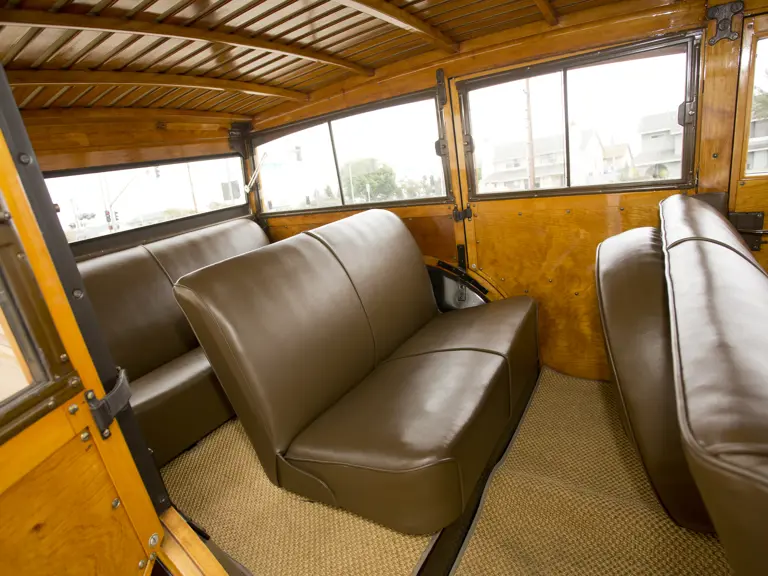
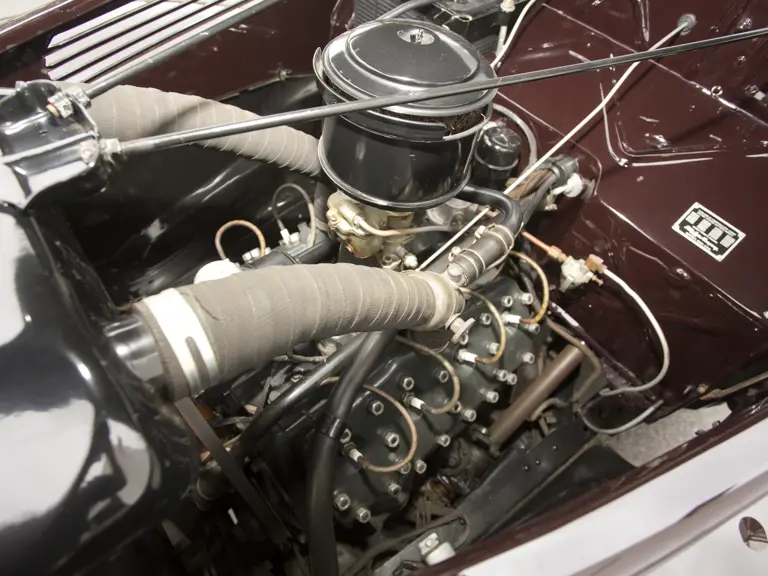
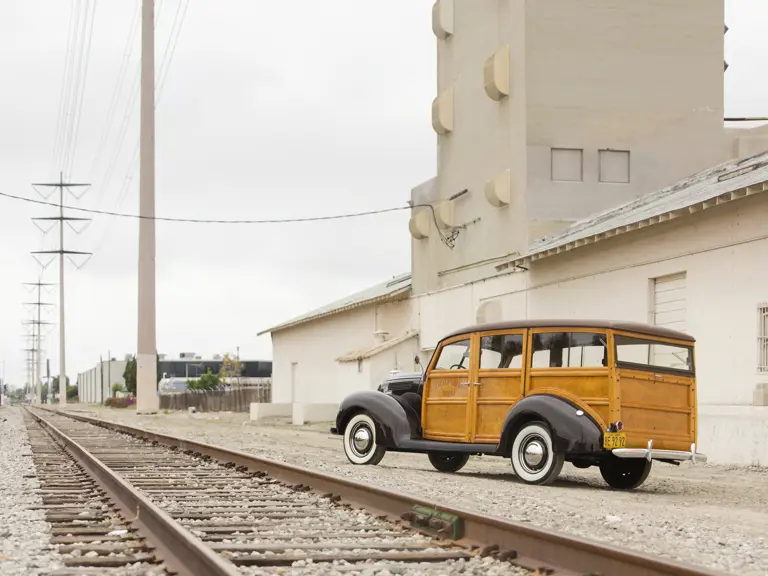
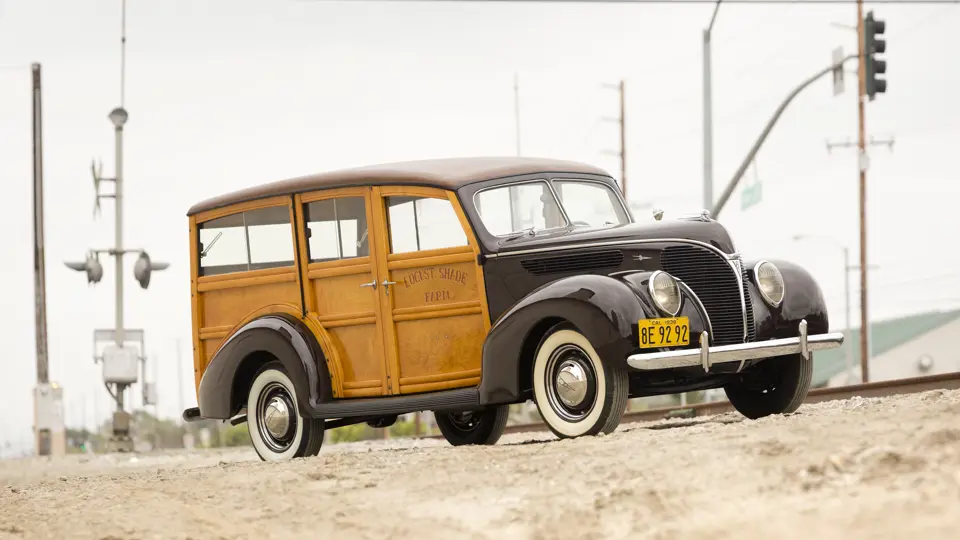
 | Monterey, California
| Monterey, California





